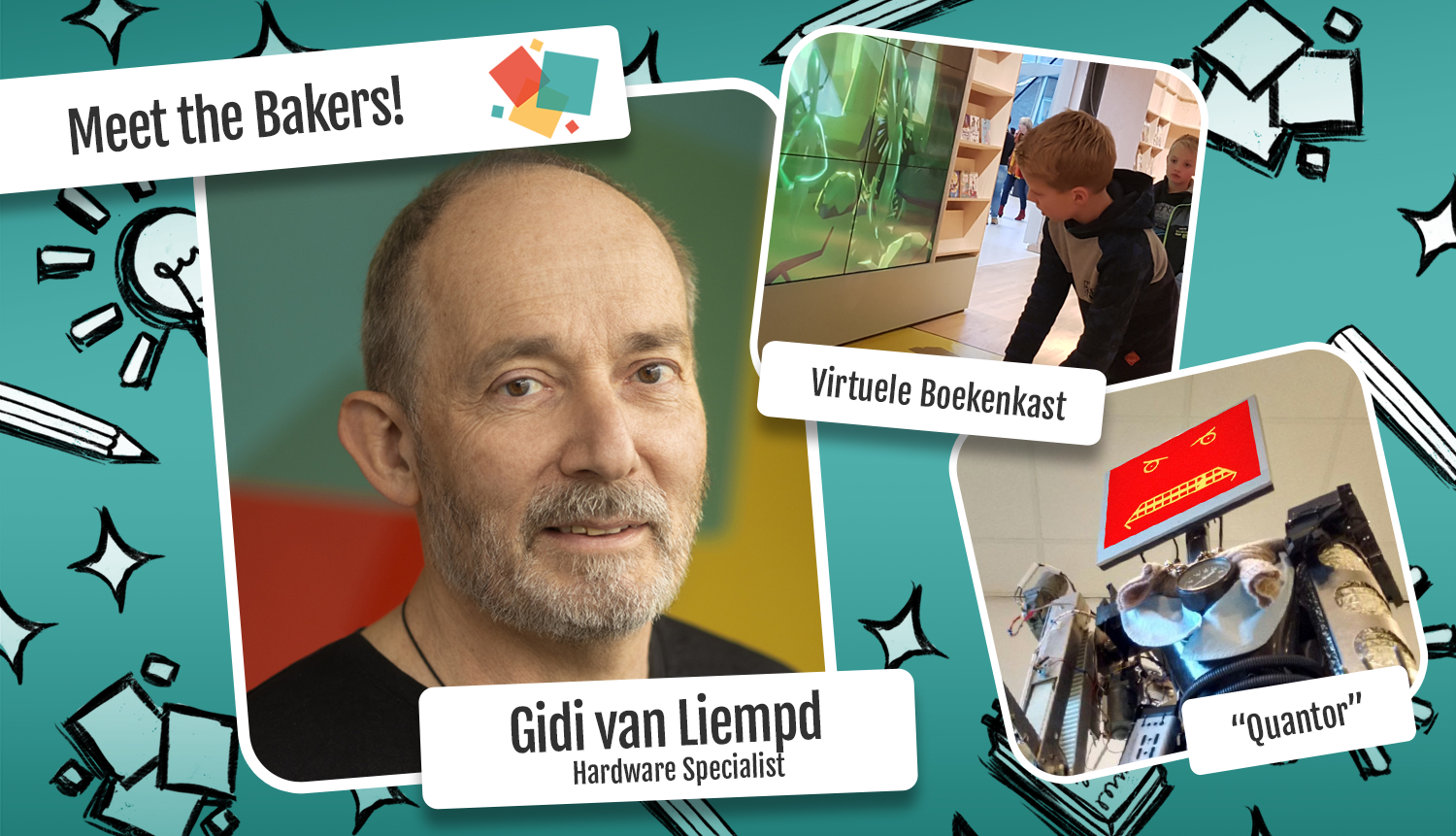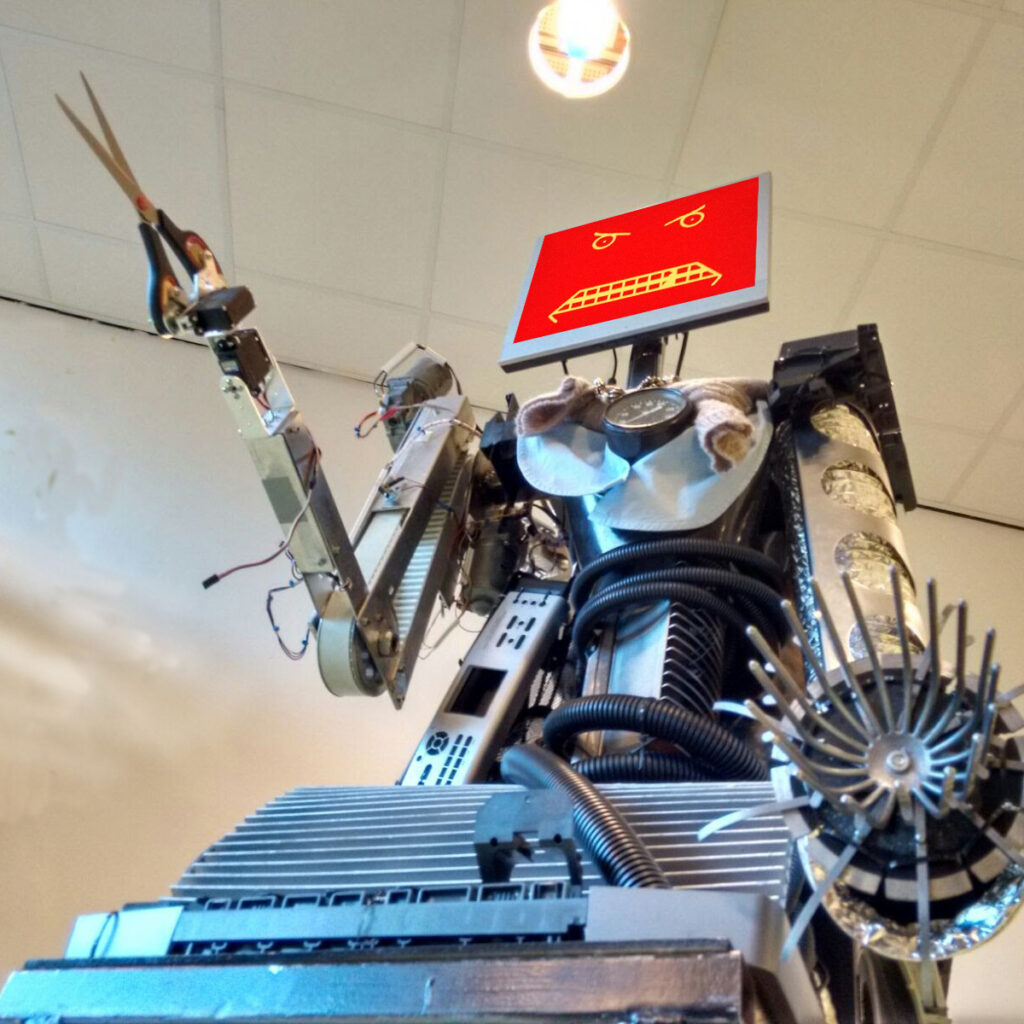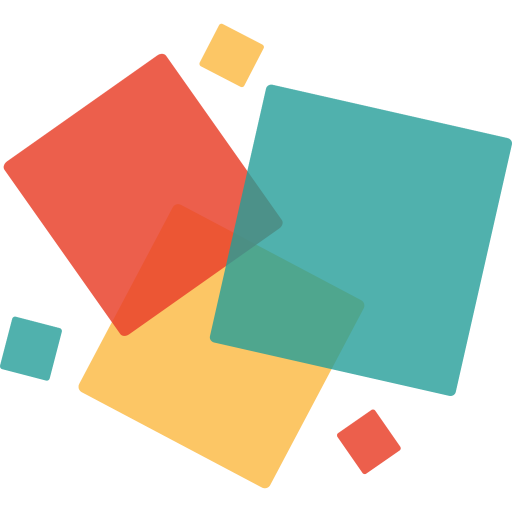
04 jun Meet the Bakers: Gee!Design
Continuing our “Meet The Bakers” series, we would like to introduce you to Gidi van Liempd and his company Gee!Design today!
Hi, my name is Gidi, pronounced “GD” in English, so that’s where my company name “Gee!Design” comes from.
At the Bakery perhaps I am known for my collection of toy robots, but since I took Quantor — my large scissor-wielding robot — home, it’s not the same.
Could you explain what you do in the field of game development?
I usually call myself just a “game programmer”, but my specialty is “special peripherals”, hardware to control your game input or output which is not an ordinary mouse, keyboard or joystick. Of course there are many “normal” entertainment games for PC, consoles or mobile devices which don’t need any special hardware. But if you look at serious games, or special game or art installations, many times people want or even need special devices as part of the game. Look at the game “Underwater” by Sfinx Games, a serious game to train ultrasound examination, which would not have been possible with just a mouse or a joystick. I made a contribution to this game, by showing them how electronics could be used to make a custom controller which is integrated into the game engine.
What do you get out of being a member of the Game Bakery?
I used to work from home for a number of years, but as a programmer I need feedback when I am stuck on some problem, just telling someone else about the problem can sometimes be enough to find a solution. And game programming has become a specialized field within programming, so it is nice to have an environment where there are people who know what you mean.
I really like the relaxed and playful atmosphere at the Bakery, and I always find the ShareYourStuff [internal presentations we have among members to showcase new developments, ed.] presentations super interesting, even from fields which are totally different from mine.

How did you get into this field?
Years ago I worked at a Dutch research lab (now part of TNO Telecom) which was a highly creative and innovative environment. (Some other (ex-) Game Bakers used to work there also!) I used to work in the field of Articial Intelligence, and later on in Virtual Reality. Then, with a small group of people we decided to make our own company and build a Massively Multiplayer Online Game. We did not succeed in getting funding, but some of us decided to continue in game programming.
I was always interested in games which included actual movement (e.g., games for the Wii), so when my (former) boss asked me to make an educational game which combined learning with moving, I did not hesitate. I made “DenkStapSprong”, a game for learning arithmetic tables or geography by combining it with a dance pad. We sold the game to several primary schools, and from there I got into other interesting projects.
Why did you decide to become a freelancer?
When I started in game development, there really was no company which needed my particular expertise full time. But people in my network would approach me with questions like “we are going to make this theater play, and we have these two problems which the set designer thinks are too difficult, but maybe you have an idea. First, we want to have a cloud following the actor on stage, and second, we want a piece of clothing walking across the stage. Can you make these?”
These questions kept coming. So I worked on a number of theater plays and art installations. Lots of different projects through the years required different combinations of software and hardware. Nowadays, it is getting increasingly easier to find electronic devices that can be combined with “standard” game engines.
Do you also work with other Game Bakers?
Yes, at the Bakery there are also various projects which need special hardware. Before, I already told you about my contribution to the “Underwater” game for Sfinx Games. But I also played a small role in contributing to BoterJan’s game “Autogame Deluxe”. In this game you can have up to ten players playing on a single screen, and each player needs just one button. Of course, then it is very nice if this one button is a nice big impressive button, and if the color of the button helps you with identifying which car you are on the screen. So I helped Freek with selecting a microcomputer which could emulate a keyboard, where each button is the same as a key on a normal keyboard. And I helped with the practical details of soldering all the wires and such. (And I made a small program for the microcomputer).
For Astron, I worked with Sfinx Games and Just Flow (Robin), where we built a complex escape room with lots of special hardware.
There are many more projects where hardware came into play. But I also contributed to projects as a “normal” game programmer.
Where can we see more of your work?
If you are in Groningen, definitely check out the Virtuele Boekenkast (in the children’s library) at Forum Groningen. In Utrecht, try one of the elevators in the Van der Valk hotel. And you can find other projects on my website: https://geedesign.com/newWebsite/


